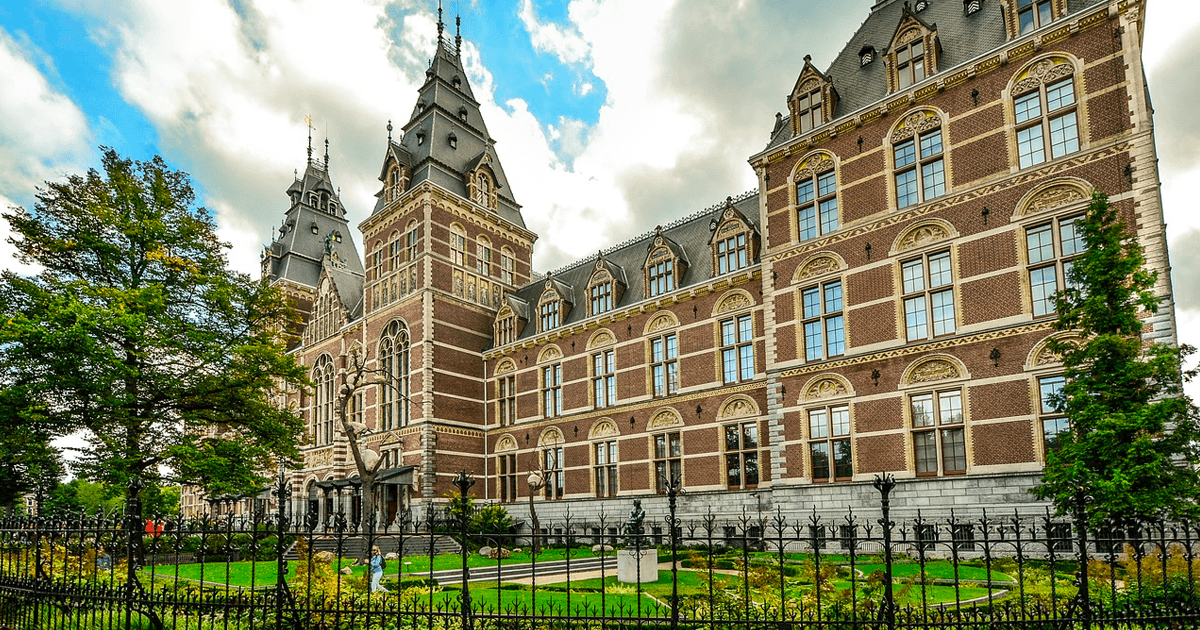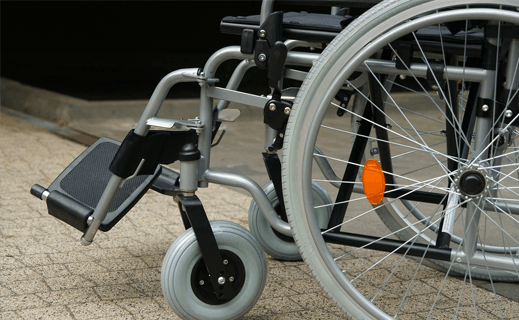Rijksmuseum Amsterdam is the most famous museum in the city. This is for a good reason. It is home to paintings of all the Dutch masters from the Golden Age. And it displays very special artifacts. Are you traveling to the Netherlands soon and thinking of visiting the Rijks? We give you seven reasons why you should not skip this monumental museum.
1. The Rijksmuseum Amsterdam is extremely accessible!
The Rijksmuseum Amsterdam has put a lot of thought into making the building accessible to everyone. There are lifts that go to every floor. There are no bars dividing the areas and there are ramps everywhere. These inclined ramps are safe to use independently. Perfect for a day of strolling around without having to worry about accessibility.
At the entrance, you can get a floor plan that shows an accessibility route. This way you will not miss a thing and know in a glance where the nearest accessible bathroom or lift is. For people who cannot move independently through the museum, they allow one companion free of charge. They can get their ticket at the entrance. And if needed, you can borrow mobility aids at the same place.
To make sure every accessibility need is thought of, The Rijksmuseum Amsterdam hired an inclusive coordinator. This person makes sure that the museum is accessible to all. They made sure the exhibition spaces are wide enough for everyone to fit and they took care of bathrooms being fully accessible. A big win for the museum and for you!


2. You get to see the Famous Night watch made by Rembrandt
Attracting about 2.2 million people per year, The Night Watch is by far the most famous painting the Rijksmuseum Amsterdam displays. The reason why it is so special is because Rembrandt van Rijn was the first painter in history to showcase people the way he did.
The painting was ordered by Captain Frans Banning Cocq, who wanted to immortalize his company of the Amsterdam militia. Rembrandt did not portray the shooters neatly in line as they expected. He painted them in motion and added a dramatic contrast between light and dark. To say the least, the people pictured weren’t very happy when they saw the end result. Everyone who paid a lot of money wanted their own section of the painting. The canvas was originally five meters wide until it was trimmed in the 18th century to fit between two columns.
In the 1940s, a cleaning revealed that the Night Watch shows no night scene at all. And so the name becomes just a nickname. You can find out the real name of the painting while visiting the museum. The Night Watch is rightfully an important painting. Rembrandt used several techniques and the way he played with the lighting is magnificent.

3. You get to see many other famous pieces of art
Besides the famous Night Watch, the Rijksmuseum has much more to offer. There is the gallery of honor in which you find all the Dutch masters of the Golden Age. Here you find the masterpieces of the seventeenth century which you can see in the side cabinets.
Unmissable highlights of the museum are the milkmaid, made by Johannes Vermeer. And the artistic gardens behind the Rijksmuseum. With beautiful flower beds, an enormous wingnut tree, and temporary exhibitions in the summer.
Other must-sees are the dollhouses. From which the museum owns three. Also, the one that inspired Jessie Burton’s 2014 novel, The Miniaturist. They were not toys, but a way to show how wealthy the Dutch housewives of that time were. They are beautifully decorated with china, silver and colorful fabrics.
With over 8000 pieces on display, there are far too many things to mention in this section. We recommend if you do not have much time, to visit the gallery of honor and see all the pieces of the Dutch Masters of the Golden Age up close.
4. There is a drawing school
The Teekenschool is a drawing school where you can not only draw but also paint, photograph, design and discover the 17th century in the Golden Age Theater. There are all kinds of workshops and courses for adults, children, families, school classes, and birthday parties.
From afternoon workshops to more-days courses. It is up to you what you would like to do. Accessible via a separate entrance for wheelchair users. Your Rijksmuseum experience starts with a session where you get to paint, draw or photograph. While making your piece of art, you learn everything there is to know about the Golden Age.
A big plus: every activity from the Teekenschool includes a visit to the museum.

5. They developed an app to enhance your visit
The Rijksmuseum developed an app which helps you get the most out of your visit. Before you go, you can download the app in the App store or Google Play store. Prepare yourself which pieces of art you want to see first, and how to get there in the most convenient way.
Through the app, you discover the best of the Rijksmuseum with unique multimedia tours. You can listen to the stories from the Rijksmuseum, meet Rembrandt and hear why he is so special. Or learn about the history and the building. Discover more through interviews with experts and artists.
Besides extra information about the building and pieces of art, you can get to know the museum in your own way and easily determine a route. The navigation system guides you from room to room with an interactive map with accessible route directions.
Please note that there are no accessible routes available yet via the app.
6. They offer private guided tours
Do not want to visit the museum on your own or want to experience the museum in a different way? Then a guided tour is a perfect option for you. Get to know the collection better or view the objects in the Rijksmuseum from new, surprising perspectives.
They offer several guided tours. From tours for big groups to exploring with pencil and paper for the little ones. You can go criss-cross through the museum and discover all the highlights and unexpected treasures in the museum. From the Middle Ages to Mondrian.
For families with little children, they offer very special tours. You can get to see the highlights on an active journey. Where you explore the museum with a pencil, paper, clay, and a gun. Or you can rent a device to play an interactive family game. The game lets you unravel eight special secrets of the Rijksmuseum within one hour. If you succeed, a surprise awaits at the end of the tour.
7. They did an impressive refurbishing of the building.
The main building of the Rijksmuseum closed its doors in December 2003 for a major renovation. The design from 1885 by architect Pierre Cuypers, who created the central station of Amsterdam as well, was restored by the Spanish architects Antonio Cruz and Antonio Ortiz.
During this expensive redesign, the architects created an underground square of 4000 square meters. The masterpieces of the museum, including Rembrandt’s Night Watch, were given a place in the Philips Wing. This area in the museum that welcomes around 1 million visitors a year.
According to the original planning, the renovation was supposed to take 4.5 years and the Rijksmuseum would reopen in the middle of 2008. This has become almost 5 years later. Due to various setbacks such as flooding, asbestos and a dispute over access for cyclists. The museum opened its brand new doors in 2013. Amsterdam has its true masterpiece restored. And is welcoming lovers of art and culture ever since.
Get inspired, continue reading
- Wheelchair Accessible Cultural Highlights of Spain
- Explore Disabled Accessible Travel’s destinations
- Accessibility guide of Acropolis and Museum
- Disabled Accessible Travel Expands Accessibility Services with Launch of Mobile App ‘accessaloo’
- Wheelchair Accessible Transfers
- Accessibility of St. Petersburg
- Mobility Equipment Rentals
- 7 Wheelchair-friendly Restaurants in Barcelona
- Everything You Need To Know About Tipping In Europe
- Nova Icaria And 4 Other Accessible Beaches Barcelona Has To Offer
- Accessibility guide Alhambra
- Accessible Train Tickets in Spain – Renfe
- Accessible islands in Europe
- Top 8 Accessible Destinations in Europe
- Accessibility guide Parliament Budapest
- A useful guide to European toilet keys








